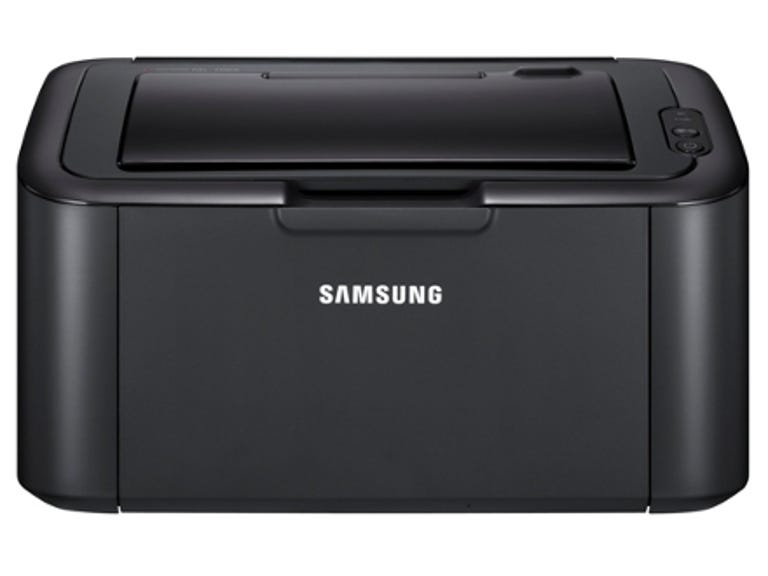 Why You Can Trust CNET
Why You Can Trust CNET Samsung ML-1665 review: Samsung ML-1665
The ML-1665 is a cheap, monochrome laser printer stripped down to its bare bones. Fortunately, those bones are worth every penny. Its print quality is great with both text and graphics, and it works at a speedy pace. It's also small, so you can tuck it away pretty much anywhere
Samsung's ML-1665 black-and-white laser printer looks like it could have been manufactured at any point in the last ten years. There are no concessions to next-generation trickery anywhere. It's just a very small and simple black box with a dinky print engine inside. It also happens to execute clean print jobs in little time at little cost. It's available now for around £75.
The Good
The Bad
The Bottom Line
Flip your lid
The tiny ML-1665 is simple to set up and operate. It took us no time at all to get it up and running, and the same should be true for you -- as long as you have a USB cable lying around to connect it to your PC or Mac. The flip-top lid opens to reveal just one consumable -- a 700-page starter cartridge.
Replacement cartridges are easy to fit. You can only opt for a 1,500-page replacement cartridge, which costs about £50 online. That works out at around 3.3 pence per print, though, which isn't bad.
On the right-hand side of the printer's top sits a combination of two hard buttons and two LED lights. The LED lights will flash maniacally if there are any hardware issues. One of the hard buttons turns the printer on, while the other is a 'print screen' button that automatically prints whatever's displayed on your monitor. This print-screen button might not sound all that impressive, but no other manufacturer has included this feature yet, and it works a treat.
The 150-page paper-input tray on the bottom of the printer feeds out to a 100-page, flip-out tray on the top. This is a standard set-up with a small printer, but side-mounted paper trays would have enabled the ML-1665 to have an even smaller footprint.
Need for speed
The ML-1665 prints at a 1,200x600dpi resolution, and Samsung claims it can churn out 16 pages per minute, with the first page emerging after 8.5 seconds. Most manufactures make wildly inaccurate speed proclamations, but Samsung hasn't in this case.
In our test, printing a one-page text document at draft quality, the ML-1665 managed a speed of 15.2ppm. That's the fastest-possible print job we could throw at the printer. We also printed a ten-page document featuring mixed text and graphics at draft quality. The printer still managed 11.5ppm.
Despite our best efforts to slow it down, the ML-1665 maintained fast first-page outputs, thanks to its nippy 150MHz processor and 8MB of memory. Its processing power meant the ML-1665 maintained print speed with more demanding jobs at higher resolutions.
Printing at draft quality proved more than sufficient for text and graphics. There's a barely perceptible amount of ghosting on draft-quality graphics, but this is completely eradicated when printing at full resolution. Printing text at maximum resolution produces sharp and rich blacks.
Conclusion
When you strip away all advanced features from a printer, what's left has to be really impressive. Samsung has got the balancing act spot-on with the ML-1665. The quality of its prints is great, it's fast, it's tiny and it's cheap. Just make sure to shop around for the best price for replacement cartridges, to keep operational costs to a minimum.
Edited by Charles Kloet
